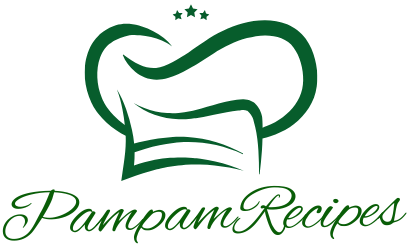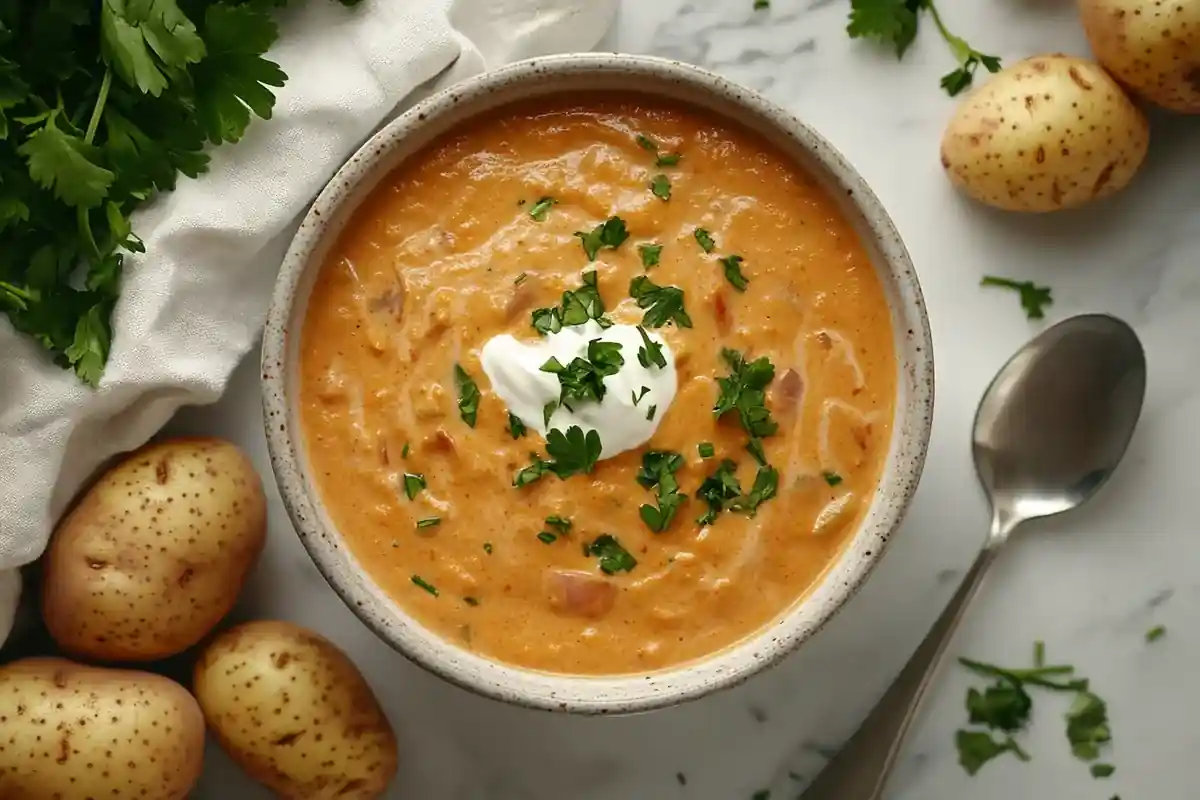Introduction
Potatoes are a staple ingredient in many soups, adding creaminess, texture, and flavor. But when it comes to preparing them, a common question arises: Do you need to cook potatoes before putting them in soup? The answer isn’t one-size-fits-all, as it depends on factors like cooking methods, potato types, and desired textures. In this article, we’ll explore the role of potatoes in soup, when and why pre-cooking might be necessary, and how to prepare them perfectly for any recipe.
Understanding the Role of Potatoes in Soup
What Potatoes Add to Soups
Potatoes are versatile and bring a lot to the table—literally! They contribute to:
- Texture: Depending on the variety, potatoes can make soups creamy, chunky, or both.
- Flavor: Their natural earthy taste enhances savory dishes.
- Thickening: Potatoes release starch as they cook, which naturally thickens the broth.
Whether you’re making a hearty vegetable stew or a classic potato leek soup, potatoes serve as a key ingredient that ties everything together.
Popular Soup Recipes Featuring Potatoes
Potatoes are a favorite in many soup recipes due to their adaptability. Here are a few classics:
- Creamy Potato Soup: A rich and velvety option that highlights potatoes as the star ingredient.
- Potato Leek Soup: A delicate, flavorful choice often blended for smoothness.
- Vegetable Soup with Potatoes: Packed with veggies, this soup uses potatoes for extra heartiness.
Each recipe demonstrates the different ways potatoes can shine, whether as the main attraction or a supporting role.
Do You Need to Cook Potatoes Before Putting Them in Soup
The Case for Adding Raw Potatoes
In most soups, adding raw potatoes directly to the broth is not only convenient but also effective. When cooking potatoes in the soup, they:
- Absorb Flavor: Raw potatoes soak up the broth’s seasonings, creating a richer taste.
- Thicken the Broth: As potatoes cook, they release starch, naturally thickening the soup.
- Simplify Prep Work: Skipping the pre-cooking step saves time, especially in one-pot recipes.
This approach works best for soups with longer cooking times, where the potatoes have ample opportunity to soften and blend with the other ingredients.
When Pre-Cooking Potatoes Might Be Necessary
While adding raw potatoes is standard, there are instances where pre-cooking is beneficial. Here’s why:
- Short Cooking Times: For quick soups, pre-cooking ensures the potatoes are tender without overcooking the other ingredients.
- Avoiding Excess Starch: Parboiling potatoes first can help reduce the starch content, preventing overly thick or gummy soups.
- Maintaining Shape: Pre-cooking is ideal if you want potatoes to hold their shape in chunky soups.
Choosing whether to pre-cook depends on the recipe and the texture you’re aiming for.
How to Prepare Potatoes for Soup
Selecting the Right Potato Variety
The type of potato you choose significantly impacts the final dish. Here’s a quick guide:
- Russet Potatoes: High in starch, they are great for creamy soups as they break down easily.
- Yukon Gold Potatoes: These all-purpose potatoes offer a balance of creaminess and structure, perfect for most soups.
- Red Potatoes: Their waxy texture holds up well in brothy or chunky soups.
Matching the potato variety to your recipe ensures the best flavor and texture.
Cutting Potatoes for Soup
To achieve uniform cooking, proper cutting is essential. Keep these tips in mind:
- Consistent Sizes: Dice or chop potatoes into similar sizes to cook evenly.
- Smaller Pieces for Faster Cooking: If time is short, smaller cubes cook more quickly.
- Leave Skins On or Off: Skins add texture and nutrients but can be peeled for a smoother finish.
Careful preparation ensures the potatoes enhance your soup without dominating the dish.
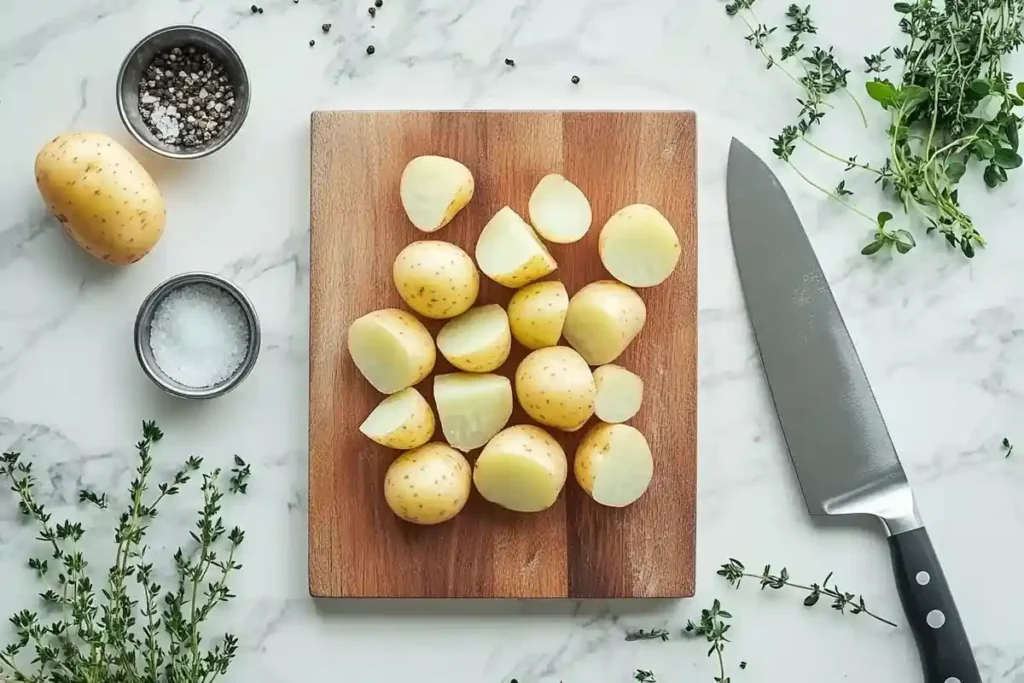
Tips for Adding Potatoes to Soup
Balancing Potatoes with Other Ingredients
When preparing a soup with potatoes, balance is key. Potatoes are hearty, so here are a few tips to keep your soup well-rounded:
- Adjust Liquid Levels: Potatoes absorb liquid as they cook, so adding extra broth or water can prevent a thick, stew-like consistency.
- Add Vegetables and Proteins Strategically: Include faster-cooking ingredients, like leafy greens or seafood, later in the cooking process to maintain their texture.
- Taste as You Go: Potatoes can mellow the flavors of the soup, so adjust seasonings like salt, pepper, and herbs accordingly.
Maintaining balance ensures every bite has a variety of flavors and textures.
Avoiding Common Potato Soup Mistakes
Even experienced cooks can run into issues when using potatoes in soup. Here’s how to avoid them:
- Overcooking: Potatoes left simmering for too long can disintegrate. To avoid this, add them during the last 20–30 minutes of cooking.
- Uneven Texture: Always stir the soup gently to prevent breaking apart the potatoes prematurely.
- Gummy Consistency: If starch content becomes an issue, consider rinsing diced potatoes under cold water before adding them to the pot.
A little care during preparation and cooking ensures your soup is as delicious as possible.
Best Recipes for Potato Soups
Classic Creamy Potato Soup Recipe
For fans of comforting and rich dishes, creamy potato soup is always a favorite. This recipe is simple and flavorful.
Ingredients
- 4 medium Yukon Gold potatoes, diced
- 1 medium onion, finely chopped
- 2 cloves garlic, minced
- 3 cups chicken or vegetable broth
- 1 cup milk or cream
- 2 tbsp unsalted butter
- 1 tsp salt
- 1/2 tsp black pepper
- Optional toppings: shredded cheese, green onions, crumbled bacon (optional per dietary preferences)
Instructions
- Prepare the Potatoes: Peel and dice the potatoes evenly.
- Sauté Aromatics: In a large pot, melt butter over medium heat. Add onions and garlic, cooking until softened.
- Add Broth and Potatoes: Pour in the broth and add the diced potatoes. Simmer for 20–25 minutes, or until the potatoes are tender.
- Blend for Creaminess: Use an immersion blender to puree the soup for a creamy texture, leaving some chunks for a rustic feel.
- Add Milk and Season: Stir in milk or cream and season with salt and pepper to taste. Simmer for 5 minutes.
- Serve and Garnish: Serve hot with your choice of toppings.
Hearty Potato and Vegetable Soup
For a lighter, nutrient-packed alternative, this vegetable-based soup is perfect.
Ingredients
- 3 large red potatoes, cubed
- 2 carrots, sliced
- 2 celery stalks, diced
- 1 cup green beans, chopped
- 4 cups vegetable broth
- 1 tsp olive oil
- 1 tsp dried thyme
- 1/2 tsp smoked paprika
- Salt and pepper to taste
Instructions
- Sauté Vegetables: Heat olive oil in a pot and sauté carrots, celery, and green beans for 5 minutes.
- Add Broth and Potatoes: Pour in broth and add the cubed potatoes, thyme, paprika, salt, and pepper.
- Simmer: Cook for 25–30 minutes until all vegetables are tender.
- Adjust Seasoning and Serve: Taste and adjust seasonings as needed. Serve warm.
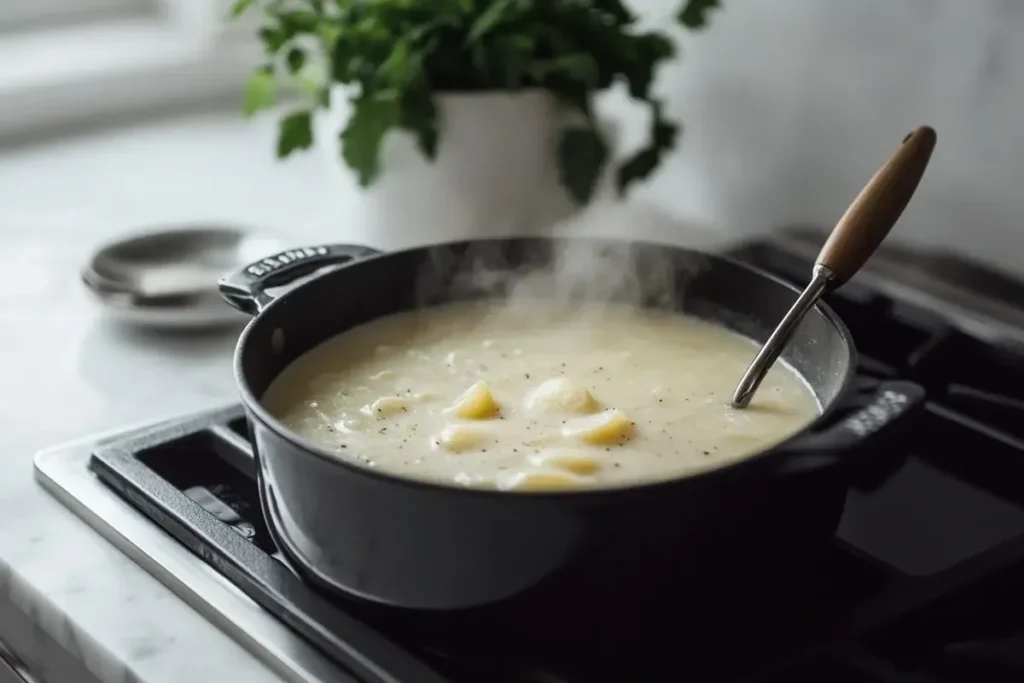
For more delicious recipes, check out our creamy soup ideas or hearty vegetable soup suggestions!
Common Questions About Cooking Potatoes for Soup
Do You Need to Cook Potatoes Before Putting Them in Soup?
Many home cooks wonder, Do you need to cook potatoes before putting them in soup? The answer depends on the type of soup and how much time you have. In most cases, there’s no need to pre-cook potatoes. Adding raw potatoes directly into the soup allows them to absorb the flavors of the broth, enhancing the overall taste. However, there are exceptions.
- For Chunky Soups: Adding raw, diced potatoes works best as they cook alongside other ingredients.
- For Smooth Soups: If you plan to blend the soup, pre-cooking the potatoes can speed up the process.
- For Quick Soups: Pre-cooking potatoes saves time, especially when making last-minute meals.
How to Choose the Right Potatoes for Soup
Selecting the right type of potato is key to achieving the texture you want.
- For Creamy Soups: Starchy potatoes like Russets break down easily, making them perfect for smooth, velvety soups.
- For Chunky Soups: Waxy potatoes like Yukon Golds or Reds hold their shape, ideal for soups with bite-sized pieces.
- For Balanced Flavor: Yellow potatoes strike a balance between creaminess and structure.
Understanding these options ensures you’ll get the best results every time.
Expert Tips for Perfect Potato Soups
Prepping Potatoes for Optimal Texture
Proper preparation is essential to prevent common potato soup pitfalls.
- Peeling (Optional): Decide based on the soup type. Peeling creates a smoother texture, while leaving skins on adds rustic appeal.
- Dicing Evenly: Uniform pieces ensure even cooking, preventing undercooked or mushy bits.
- Soaking (Optional): Soaking diced potatoes in cold water removes excess starch, which helps maintain a clean broth.
Flavor Boosting Techniques
Enhancing the flavor of potato soups can elevate them from good to amazing.
- Sauté First: Start by sautéing onions, garlic, or leeks to add depth.
- Add Herbs and Spices: Fresh thyme, rosemary, or smoked paprika enhance the earthy flavors of potatoes.
- Finish with Cream or Butter: Stirring in a touch of cream or butter at the end adds richness and smoothness.
By following these tips, you’ll consistently create potato soups that are flavorful and satisfying.
Creative Variations of Potato Soup
Adding Unique Ingredients for a Twist
If you’ve ever wondered, Do you need to cook potatoes before putting them in soup?, you might also be curious about ways to make your potato soup stand out. Experimenting with unique ingredients can elevate your recipe to the next level.
- Cheese: Stir in cheddar, Parmesan, or Gruyere for a creamy, tangy kick.
- Vegetables: Add roasted garlic, carrots, or even spinach for more depth.
- Proteins: Crumbled bacon, shredded chicken, or plant-based sausage add heartiness and flavor.
- Spices: Sprinkle smoked paprika, nutmeg, or turmeric to create layers of complexity.
These creative additions ensure your soup remains exciting every time you prepare it.
Potato Soup Around the World
Potato soup recipes differ depending on cultural influences, each offering a new experience.
- Irish Potato Soup: Focuses on simplicity, using leeks, butter, and potatoes for a comforting taste.
- German Potato Soup: Often includes sausage, celery, and a touch of vinegar for tang.
- Indian-Inspired Potato Soup: Features curry spices and coconut milk for a rich, aromatic profile.
Trying international versions allows you to appreciate the versatility of this humble dish.
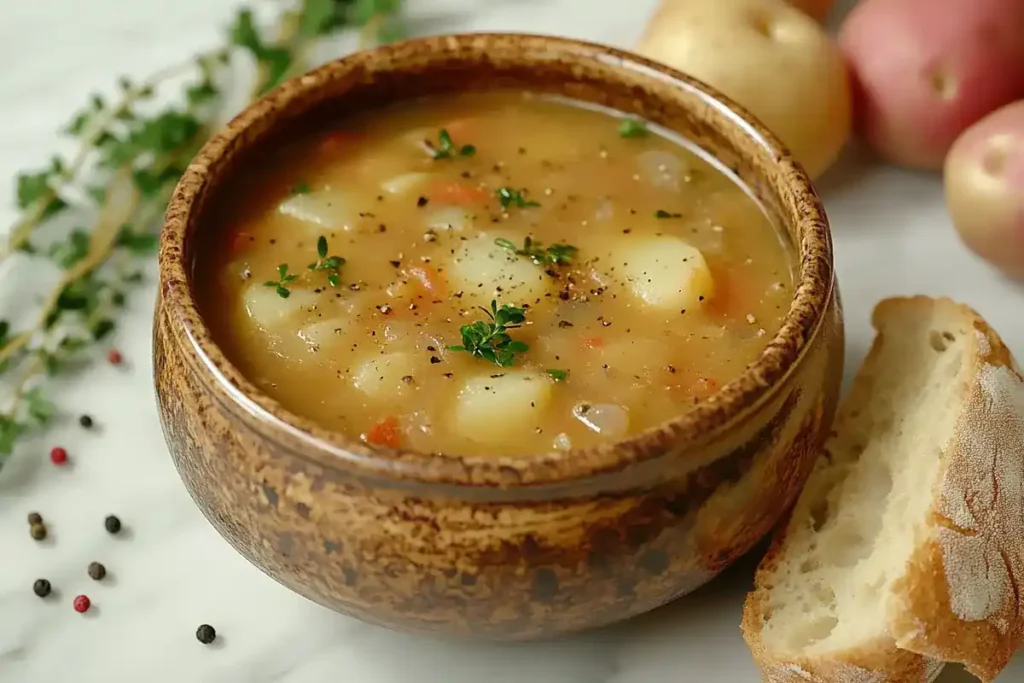
Final Thoughts on Potato Soup Preparation
Mastering the Basics
The question Do you need to cook potatoes before putting them in soup? highlights the importance of knowing your recipe. While most soups benefit from adding raw potatoes, pre-cooking can be a time-saver. Whether you’re preparing a hearty stew or a creamy bisque, understanding how potatoes behave during cooking ensures the best texture and flavor.
Why Potato Soup Is a Comfort Food Favorite
Potato soup remains a timeless comfort food because it’s so adaptable. You can make it light and brothy or rich and indulgent. It pairs wonderfully with crusty bread or a simple salad, making it a versatile choice for any meal. Additionally, its ingredients are budget-friendly and easy to find, making it an accessible option for home cooks.
Mastering the art of potato soup unlocks endless possibilities. From choosing the right potato to deciding when to cook them, each step shapes the outcome. So, grab your favorite recipe and enjoy the journey of creating this cozy classic.
FOR MORE DELICIOUS RECIPES:
what-can-i-add-to-potato-soup-to-add-flavor
